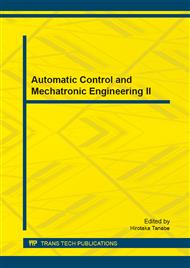p.538
p.544
p.548
p.555
p.561
p.565
p.569
p.574
p.578
Research on Co-Simulation of Driving Antiskid Control for Electric Drive Wheeled Vehicle
Abstract:
In order to overcome the shortcoming as the model is too simple to reflect the whole vehicles mechanical characteristics in traditional simulation for electric drive vehicle, the method of mechanical-electrical co-simulation is put forward. The virtual model of 8×8 wheeled vehicle is constructed by ADAMS, and then the co-simulation model is built. The co-simulation experiment is taken under the working condition of accelerating on low adhesive road,the accurate of the control model is validated according to the result, which will contribute to the research on driving antiskid control for in-wheel motor drive vehicle.
Info:
Periodical:
Pages:
561-564
Citation:
Online since:
September 2013
Authors:
Price:
Сopyright:
© 2013 Trans Tech Publications Ltd. All Rights Reserved
Share:
Citation:


